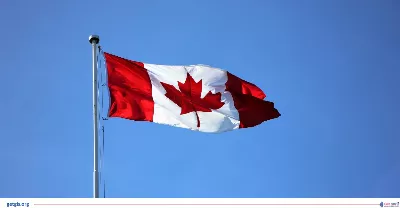IRCC to Unveil Immigration Levels Plan 2026-28: Check Expected Changes & Priorities
Updated On
-
Copy link
The Canadian federal government is all set to announce how many permanent residents and temporary residents Canada aims to admit in the year of 2026. Their Immigration Levels Plan 2026-2028 is expected on or before November 1, 2025
The Canadian federal government is all set to announce how many permanent residents and temporary residents Canada aims to admit in the year of 2026. It is expected that on or before November 1, 2025, IRCC Canada will publish the Immigration Levels Plan 2026-2028 like every year. So what we can expect from Immiratio Levels Plan 2026-2028
Permanent Residents' Levels Could Remain Stable
If the federal government keeps its election promise, we could expect that permanent residency admission targets for 2026 will not exceed 416,500.
Considering the Liberals' pledge to stabilize permanent resident admissions at less than 1% of Canada’s population annually, while the current Canadian population stands at an estimated 41.65 million as of July 1, 2025.
The target from the Plan implemented last year also falls beneath this upper bound, as the government has cut down PR admissions targets for 2025 by 20% compared to the 2023 Plan. The PR targets, as mentioned in the Immigration Levels Plan 2025-2027, include:
| Year | Immigration Levels Plan 2025-2027 | Immigration Levels Plan 2024-2026 |
|---|---|---|
| 2025 | 395,000 | 500,000 |
| 2026 | 380,000 | 500,000 |
| 2027 | 365,000 | - |
*The targets include economic immigration, family reunification, and refugee and humanitarian immigration
Express Entry Targets for 2026
- Although the last year's immigration levels plan highlighted a decrease in the total permanent resident admissions by 20%, the allocation targets for economic immigrants through the Express Entry system actually witnessed an increase.
- The 2025-27 Immigration Levels Plan introduced categories like Federal Economic Priorities and In-Canada focus, in place of what was previously known as Federal High Skilled (FHS) category allocations for admissions through the Express Entry System.
- For the year 2025, the combined target, i.e., Federal Economic Priorities (41,700) and In-Canada Focus (82,980 spots), sums up to a target of 124,680, which is greater than the previous FHS targets of 117,500.
|
Year
|
Immigration Levels Plan 2025-2027 | Immigration Levels Plan 2024-2026 | |
|---|---|---|---|
| Federal Economic Priorities | In-Canada Focus | Federal High Skilled | |
| 2025 | 41,700 | 82,980 | 117,500 |
| 2026 | 47,400 | 75,830 | 117,500 |
| 2027 | 47,800 | 70,930 | - |
*While Federal Economic Priorities includes in-demand occupations for category-based draws, as well as French language proficiency, the In-Canada Focus refers to permanent resident admissions of foreign nationals already in Canada with valid temporary resident status.
Provincial Nominee Program Targets for 2026
- The Immigration Levels Plan 2025-2026 has seen a significant shift in Canada's recent immigration strategy regarding Provincial Nominee Program (PNP) targets.
- The plan has reduced federal admission targets for the PNP by half as compared to the previous year, i.e., down to 55,000 for years 2025, 2026, and 2027 compared to 110,000 in 2024.
| Year | Immigration Levels Plan 2025-2027 | Immigration Levels Plan 2024-2026 |
|---|---|---|
| 2025 | 55,000 | 110,000 |
| 2026 | 55,000 | 110,000 |
| 2027 | 55,000 | - |
To further serve these targets, provinces have received significantly smaller nomination allocations for 2025. However, many provinces, British Columbia, Manitoba, Saskatchewan, Newfoundland and Labrador, and New Brunswick, have successfully negotiated to increase their PNP nomination allocations for 2025.
Moreover, on October 16, Immigration Minister Lena Diab met with her provincial and territorial counterparts to further discuss allocating extra spaces under their PNPs. Recounting all these if the federal government were to continue along the same path, we can see an increased PNP allocation for 2026, compared to the present target of 55,000.
Also Read: IRCC Canada Increases MPNP Quota by 1,489 Spots for 2025
Temporary Residents Admission Targets for 2026
- It is highly expected that IRCC would include temporary residents in the upcoming Immigration Levels Plan
- In its 2025 consultations, which were intended to inform the 2026-2028 plan, IRCC has stated that it would build on last year's approach and remain guided by its commitment to reduce the non-permanent resident population to less than 5% of Canada's total population by the end of 2027.
- The Immigration Levels Plan 2025-2027 marks the first time that a plan has included temporary residence, i.e., Temporary Foreign Workers and International Students
- The targets for international students in 2025 made up the majority of temporary distance reliable for 2026 and 2027. While the reminder was allocated to temporary workers under the Temporary Foreign Worker Program and the International Mobility Program
| Program/Year | 2025 | 2026 | 2027 |
|---|---|---|---|
| International Mobility Program | 286 | 128,700 | 155,700 |
| Temporary Foreign Worker Program | 82,000 | 82,000 | 82,000 |
| Students | 305,900 | 305,900 | 305,900 |
| Overall Arrivals | 673,650 | 516,600 | 543,600 |
What Does This Mean for the Temporary Foreign Worker Program?
Prime Minister Mark Carney has signalled that the upcoming policies for the Temporary Foreign Worker Program (TFWP) are on the horizon. Though it remains uncertain how many changes might impact the annual intake target of 82,000 workers, which is currently set under the program
During this address to the Liberal Caucus in Edmonton on September 10, Prime Minister Carney emphasised the need for a more focused approach to the Temporary Foreign Worker Program, one that prioritises specific strategic sectors and addresses regional labour market needs.
Over the past 18 months, the government has already implemented several key adjustments to the TFWP, including.
- Establishing a moratorium on the processing of low-wage LMIAs in regions with an unemployment rate of 6% or higher.
- Raising the wage threshold for the highway streams of the TFWP
- Lowering the caps for the percentage of an employer's workforce that can be hired through the TFWP.
- Limiting the availability of Spousal Open Work Permits (SOWPs) to spouses of TFWP holders working in TEER 0 or 1 occupations and in select in-demand TEER 2 and 3 occupations
The TFWP program faced criticism this year, with Conservative Party leader Pierre Poilievre calling for it to be abolished.
Also Read: Canada Immigration Levels Plan 2026-28 Coming in November 2025; Targets Likely to Rise
Increased Focus on Francophone Immigration
Given that the federal government follows through on its election commitments, an increase in Francophone immigration targets could be expected by 2028. Under the current 2025 to 2027 Immigration Levels Plan, Canada aims to gradually increase the French-speaking permanent residents population outside Quebec by targeting 8.5% in 2025 to 9.5% in 2026, and 10% in 2027
During his campaign, Prime Minister Carney has pledged to boost this figure, further reaching 12% by 2029
IRCC has also consistently emphasised Francophone Immigration as a key priority, even as overall immigration targets have scaled back, with recent initiatives, which include French language category-based draws, the introduction of pathways such as the Francophone Community Integration Pilot, and expanded settlement support for French-speaking newcomers.
Caps on International Students
It yet remains uncertain whether the upcoming immigration levels plan will make changes to international student admission targets.
According to the 2025-27 plan, the government had set annual targets of 305,900 international student arrivals for 2025, 2026, and 2027. To further maintain these targets, Ottawa introduced a national cap on study permit applications, requiring most applicants to include a Provincial Attestation Letter (PAL) with their applications.
*The annual cap, which is revised and updated each year, is generally announced in January.
Also Read: IRCC to Accept More Applications Through FMCSP Study to PR Pathway in 2025-26
Confidently Navigate Through the Canada Immigration Process With GetGIS Guidance
As Canada prepares to reshape its immigration priorities, staying informed about upcoming policy changes would be crucial for aspiring immigrants to navigate these evolving immigration pathways with confidence. Consider seeking expert end-to-end guidance from GetGIS for a smooth and successful application and immigration process.




